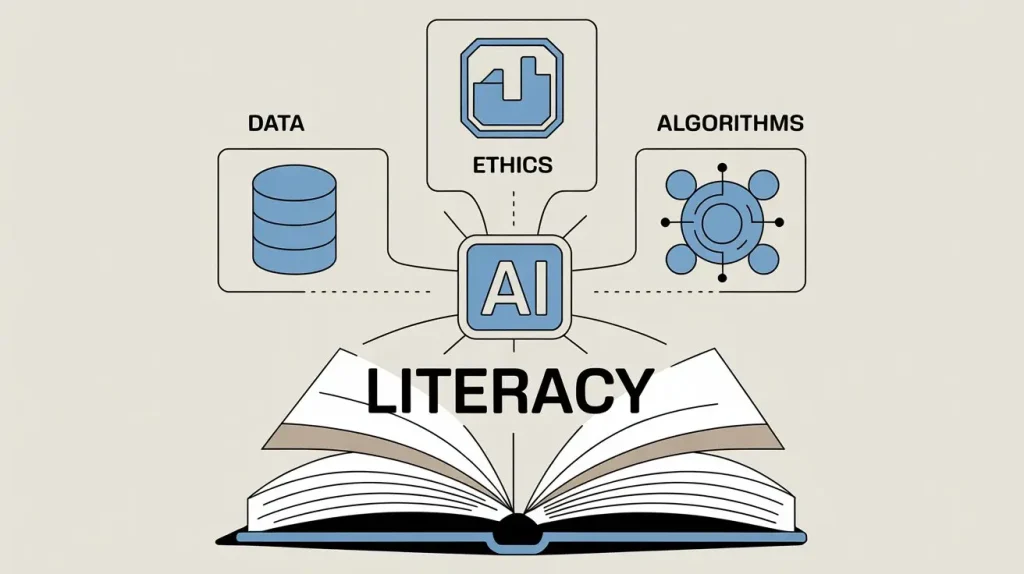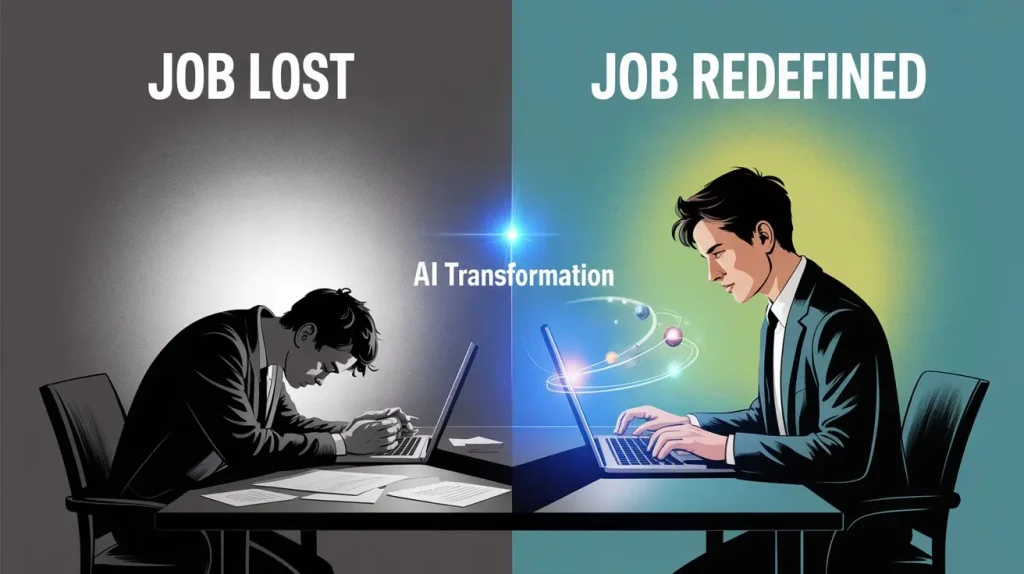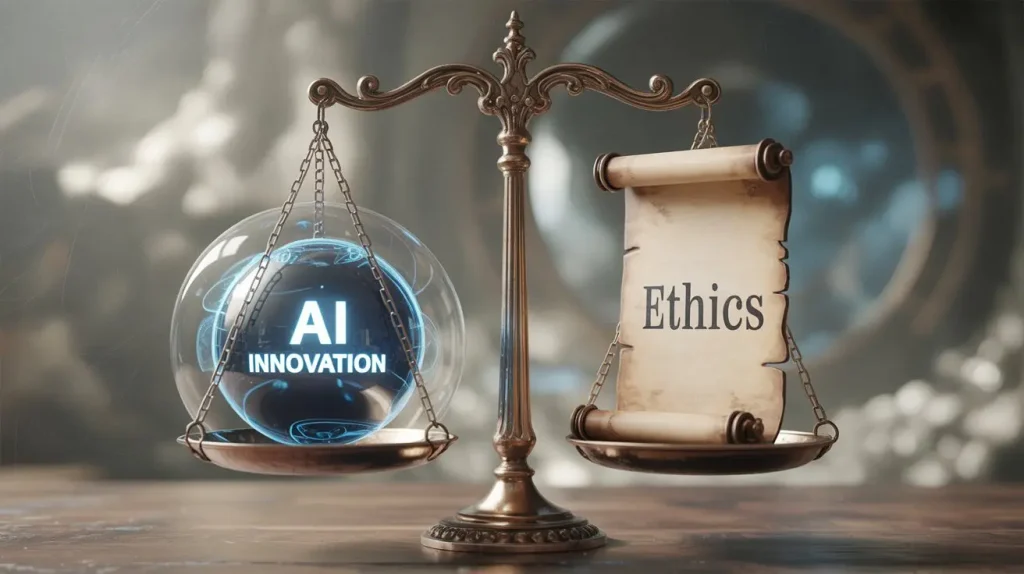Learn with Cisco at Cisco Live 2025 in San Diego
Supercharge your learning, level up your skills, skyrocket your career.
As artificial intelligence (AI) increasingly becomes a part of daily life, understanding how it works, its potential, and its limitations has never been more important. This essential skill set is known as AI literacy, which is quickly becoming as crucial as traditional literacy in navigating our modern world.
AI is no longer restricted to technology professionals. Today, it affects nearly every aspect of life, from healthcare and education to transportation and finance. But with this rapid adoption comes a genuine concern: could AI automation lead to significant job displacement?1 This fear underscores why AI literacy is crucial—not just to understand the technology but to remain employable and adaptable in a changing economy.

At its core, AI literacy means understanding AI technologies enough to use them effectively, safely, and ethically.2 It includes recognizing the various forms AI takes, such as machine learning, natural language processing, and neural networks. Each of these types has unique applications and limitations, impacting everything from the way businesses operate to how healthcare providers diagnose diseases.3
Yet, understanding AI isn’t limited to grasping technical concepts. It also involves critically assessing AI’s impacts, recognizing ethical considerations like bias, fairness, and accountability, and knowing how to apply this knowledge responsibly in real-life scenarios.2,3

One of the biggest concerns people have about the spread of AI is job displacement. The fear is understandable: automation powered by AI can handle repetitive, routine tasks more efficiently than humans, raising the possibility that millions of jobs could become obsolete.4 While certain roles, especially those involving predictable, manual tasks, are indeed at risk, this narrative doesn’t fully capture the complexity of AI’s impact on employment.
Rather than eliminating jobs entirely, AI often changes them. Roles evolve to involve more human-centric skills such as strategic thinking, creativity, problem-solving, and empathy—skills machines can’t yet replicate effectively.4,5 Consequently, developing AI literacy is crucial. Individuals equipped with an understanding of AI will find themselves better positioned to adapt to changes rather than being displaced by them.

Industries across the globe are already adapting to the realities of AI-driven automation. Businesses are not simply replacing human workers with AI but rather integrating these technologies to complement human capabilities.6
For instance, in healthcare, AI tools help physicians diagnose conditions faster and more accurately, but they don’t replace the doctor’s judgment or patient interaction.3 In education, AI assists teachers with personalized lesson plans and administrative tasks, allowing educators to spend more quality time with students rather than being buried in paperwork.7 Likewise, finance companies employ AI for risk assessment and fraud detection, augmenting analysts’ decision-making capabilities rather than completely replacing human oversight.6
These examples highlight that while AI may shift job responsibilities, it also creates new roles. Job categories such as AI trainers, data analysts, and ethical compliance officers are rising rapidly. These roles didn’t exist a decade ago but now require strong AI literacy.4,6

Given AI’s role in reshaping industries, developing AI literacy is crucial for personal and professional growth. Here are some fundamental skills to prioritize:
Acquiring these skills isn’t just advantageous; it’s becoming a necessity to thrive in today’s workforce.

Ethics plays a pivotal role in AI literacy. AI systems are not inherently neutral—they reflect the values, biases, and objectives of their creators. Issues such as biased algorithms influencing hiring decisions, facial recognition systems misidentifying individuals, or social media algorithms amplifying misinformation illustrate the importance of understanding these ethical challenges.2,5
Those literate in AI can better advocate for fair, transparent, and accountable technologies. They’re equipped to recognize potential harms early, demand more from AI developers and companies, and push for regulations and standards that ensure safe AI usage.
In an era defined by rapid technological advancement, being literate in AI isn’t optional—it’s essential. AI literacy provides individuals with the tools to critically engage with technology, adapt to workforce changes, and make informed decisions about the role AI plays in their personal and professional lives.
Ultimately, developing AI literacy isn’t just about keeping pace with technology; it’s about ensuring we shape an AI-driven world thoughtfully, ethically, and inclusively.
Citations
Please note, that the author may have used some AI technology to create the content on this website. But please remember, this is a general disclaimer: the author can’t take the blame for any mistakes or missing info. All the content is aimed to be helpful and informative, but it’s provided ‘as is’ with no promises of being complete, accurate, or current. For more details and the full scope of this disclaimer, check out the disclaimer page on the website.
The post AI Literacy 101: What Everyone Needs to Know in an AI-Driven World appeared first on AI GPT Journal.
Author: Jim Malervy -
Supercharge your learning, level up your skills, skyrocket your career.
Amazon Managed Workflows for Apache Airflow (MWAA) now provides the option to update environments without
Red Hat Enterprise Linux (RHEL) for AWS, starting with RHEL 10, is now generally available,
Mountpoint for Amazon S3 now lets you automatically mount an S3 bucket when your Amazon
Today, Amazon Elastic Kubernetes Services (Amazon EKS) announced the general availability of configuration insights for